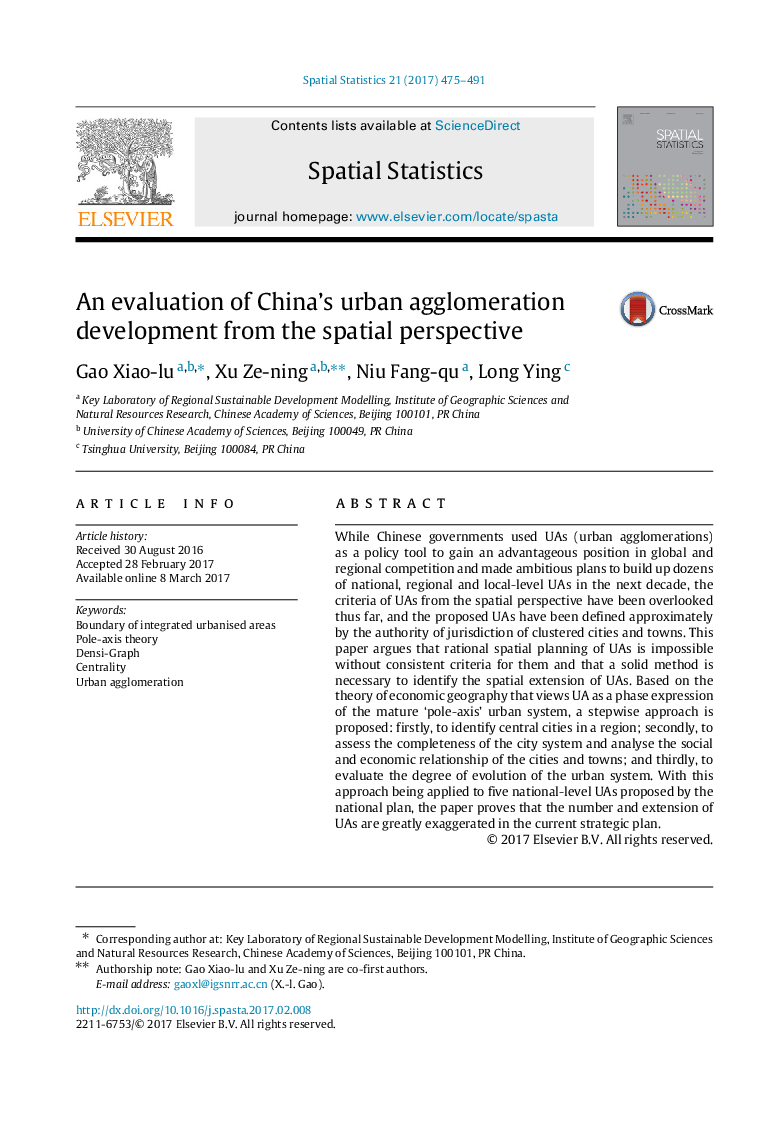| Article ID | Journal | Published Year | Pages | File Type |
|---|---|---|---|---|
| 5118983 | Spatial Statistics | 2017 | 17 Pages |
While Chinese governments used UAs (urban agglomerations) as a policy tool to gain an advantageous position in global and regional competition and made ambitious plans to build up dozens of national, regional and local-level UAs in the next decade, the criteria of UAs from the spatial perspective have been overlooked thus far, and the proposed UAs have been defined approximately by the authority of jurisdiction of clustered cities and towns. This paper argues that rational spatial planning of UAs is impossible without consistent criteria for them and that a solid method is necessary to identify the spatial extension of UAs. Based on the theory of economic geography that views UA as a phase expression of the mature 'pole-axis' urban system, a stepwise approach is proposed: firstly, to identify central cities in a region; secondly, to assess the completeness of the city system and analyse the social and economic relationship of the cities and towns; and thirdly, to evaluate the degree of evolution of the urban system. With this approach being applied to five national-level UAs proposed by the national plan, the paper proves that the number and extension of UAs are greatly exaggerated in the current strategic plan.
